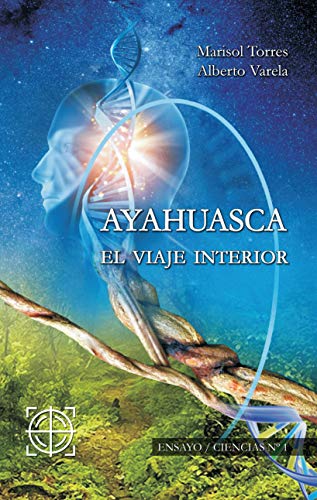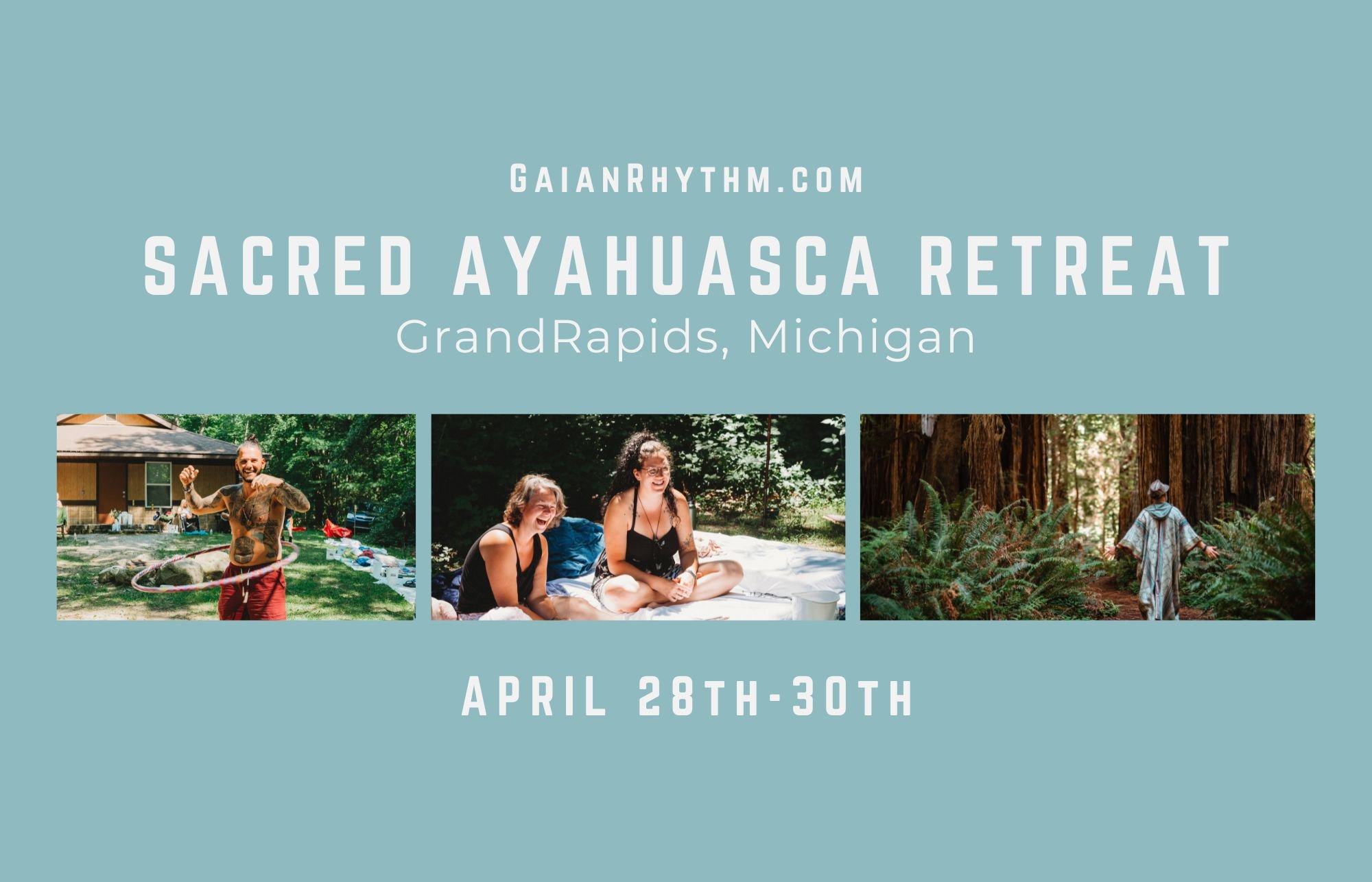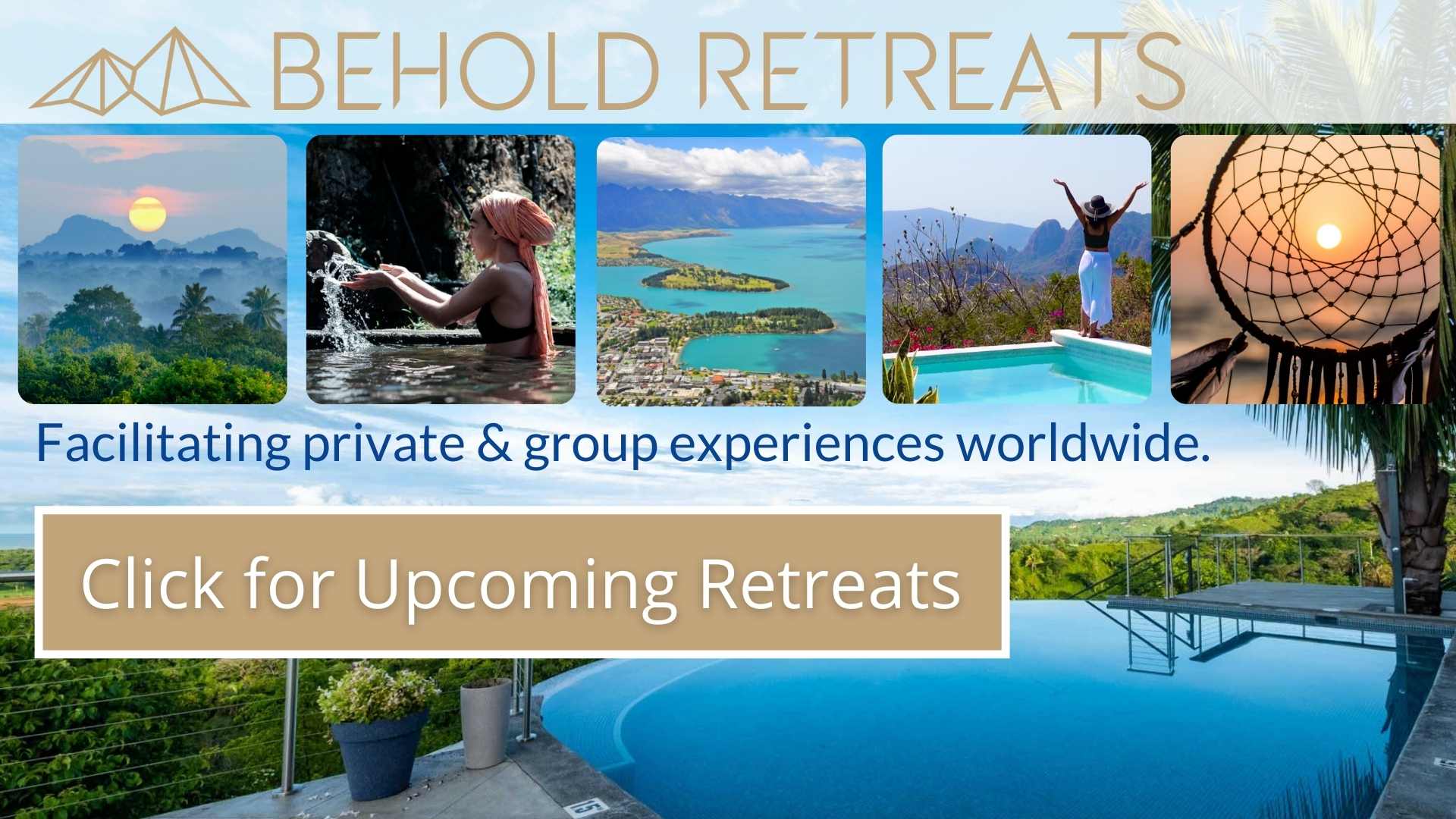Welcome to my latest Ayahuasca Experience blog post, where we’ll unravel the mystical journey of communing with the Dragon of the Jungle through Ayahuasca. Join me on this profound healing voyage.
Unveiling the Mysteries: Embracing the Dragon of the Jungle during an Ayahuasca Healing Retreat
Within the depths of the Amazon rainforest, a spiritual journey beckons the hearts of many: an Ayahuasca healing retreat. This ancient practice has been revered by indigenous communities for centuries, holding the promise of profound transformation and self-discovery. Here, amidst the chorus of nature, one encounters the ‘Dragon of the Jungle’, a metaphor for the potent force and primal energy that Ayahuasca represents.
Participants enter this sacred space with intentions varied and deeply personal, from seeking healing from trauma, to exploring the farthest reaches of consciousness. The retreat begins with ceremonies led by experienced shamans, who guide the uninitiated through the complexities of the Ayahuasca experience. These rituals are designed to open the mind and spirit, encouraging an embrace of the dragon’s fierce yet healing energy.
The brew itself, comprising of the Ayahuasca vine (Banisteriopsis caapi) and leaves of the chacruna plant (Psychotria viridis), is known for its psychoactive properties. Consumed in a ceremonial setting, it transports individuals on a journey through their innermost landscapes, often revealing unseen truths and insights. This encounter with the ‘Dragon’ can be tumultuous, as Ayahuasca forces the confrontation with long-buried emotions and memories.
Amidst these trials, however, lies the potential for healing and renewal. Many report emerging from the experience with a newfound sense of clarity and purpose, having released past burdens and connected with a deeper sense of spirituality. The Dragon of the Jungle, fierce in its power, becomes an ally in the quest for inner peace and understanding.
As participants navigate the tumultuous waters of their psyches, they are supported by the community of fellow seekers and healers who collectively create a safe and nurturing environment. Together, they share in the wisdom of the jungle, learning to harness the power of the Dragon not as a beast to be feared, but as a source of strength and enlightenment.
An Ayahuasca retreat, therefore, is far more than a simple vacation—it’s a pilgrimage into the heart of existence. It’s a dance with the Dragon of the Jungle, an embrace of the mighty currents of life, and a testament to the enduring pursuit of healing and growth. Such an experience remains etched in the soul, a reminder of the boundless potential that lies within the intertwining of the human spirit and the natural world.
Graham Hancock Breaks In Tears: «Antarctica Is Not What We’re Being Told!»
Graham Hancock: «What They Just Discovered In Egypt TERRIFIES The Whole World!»
How does ayahuasca alter your perception or state of being?
Ayahuasca, a powerful plant-based brew originating from the Amazon region, is known for its profound impact on human consciousness. During an Ayahuasca Retreat and Healing session, participants often report experiencing a significant alteration in their perception and state of being. This transformational shift is due to the active ingredients in ayahuasca, primarily N,N-Dimethyltryptamine (DMT), and harmala alkaloids, which work together to induce a psychedelic state.
When consumed, DMT, a naturally occurring psychedelic compound, interacts with the serotonin receptors in the brain, leading to changes in visual and auditory perception, emotion, and thought processes. The harmala alkaloids present in the vine (Banisteriopsis caapi), one of the two main ingredients of ayahuasca, act as monoamine oxidase inhibitors (MAOIs), allowing DMT to be orally active and prolonging its effects.
On a perceptual level, ayahuasca can lead to intense visual hallucinations, often described as kaleidoscopic patterns, vivid colors, and encounters with entities or symbolic visions. These experiences are typically laden with personal, spiritual, or ancestral meaning and can provide insights into one’s life or consciousness.
Emotionally, ayahuasca can break down barriers to deep-seated emotions, bringing forth a range of feelings from euphoria to profound sadness. This emotional unveiling is often seen as a therapeutic process, allowing individuals to confront and heal from past traumas or psychological distress.
Cognitively, ayahuasca can lead to an altered sense of time and space, with many reporting that they experience profound epiphanies about the nature of reality, the universe, or their personal purpose. Thoughts may become non-linear, and typical mental chatter can give way to a more introspective and meditative state.
On a spiritual or existential level, users frequently describe experiences of ego dissolution and a feeling of oneness with the universe, nature, or the divine. This sensation, often referred to as a mystical or peak experience, can lead to long-term changes in one’s outlook on life, fostering a sense of interconnectedness and empathy towards others.
It is critical to note that ayahuasca experiences are highly individual and can vary greatly from person to person. They are influenced by a multitude of factors, including the individual’s mindset (set), the environment (setting), the specific brew composition, and the cultural context of the ritual. In a healing retreat setting, these experiences are usually guided by experienced practitioners, who provide a safe space and support for integration of the experience into one’s life.
What is the religious origin of ayahuasca?
The religious origin of ayahuasca can be traced back to the indigenous peoples of the Amazon basin. Ayahuasca is a brew traditionally used for spiritual and healing purposes by various ethnic groups in countries like Brazil, Peru, Colombia, and Ecuador. It is made from the Banisteriopsis caapi vine, commonly known as the ayahuasca vine, and usually combined with leaves containing dimethyltryptamine (DMT), such as those from the plant Psychotria viridis.
The use of ayahuasca is deeply embedded in the ritual practices and cosmology of indigenous tribes, where it is often considered a sacred medicine. The indigenous shamans, or healers, use the brew in ceremonial contexts for divination, healing, and spiritual guidance. These ceremonies are led by the shamans, who guide participants through the intense experiences that ayahuasca can induce.
Shamanistic traditions view ayahuasca as a means to connect with the spiritual world, allowing individuals to confront their personal issues and receive insights and healing from plant spirits and other entities. It’s important to note that these practices have been developed over centuries within the cultural and religious frameworks unique to each tribe.
As ayahuasca has gained popularity worldwide, the context of its use has expanded and diversified. In contemporary ayahuasca retreats, which often cater to people from outside the indigenous culture, there is still an emphasis on the spiritual and therapeutic aspects of the experience. While these modern applications may not strictly adhere to traditional religious practices, they typically maintain a respect for the sacred nature of the brew and incorporate ritual elements inspired by indigenous customs.
It’s crucial to acknowledge that the expansion of ayahuasca’s use beyond its traditional context raises questions about cultural appropriation, sustainability, and legal issues, as the brew has psychoactive properties and is subject to legal restrictions in many countries. Participants in modern retreats are encouraged to approach ayahuasca with reverence for its cultural origins and an understanding of the responsibilities involved in its consumption.
What occurs during an ayahuasca retreat?
During an ayahuasca retreat, participants go through a series of experiences that are designed to facilitate personal growth, healing, and spiritual insight. The structure of each retreat can vary depending on the organizers, the shaman, or the tradition being followed, but several core elements are often present.
Preparation: Prior to the actual ceremony, participants are usually asked to follow a special diet, often referred to as a *dieta*. This diet excludes certain foods and stimulants to prepare the body and mind. Participants may also engage in various cleansing rituals, such as tobacco purges or sauna sessions, to help remove toxins.
The Ceremony: At the heart of the retreat are the ayahuasca ceremonies themselves. Conducted at night and led by a shaman or experienced facilitator, the ritual typically begins with the setting of intentions. Participants then consume the ayahuasca brew, which contains the powerful psychoactive substance DMT, known for inducing profound visions and insights.
During the ceremony, individuals might experience intense emotional, psychological, and spiritual revelations. Common experiences include vivid hallucinations, revisiting past memories, deep introspection, and feelings of oneness with the universe. It’s not uncommon for people to face personal fears or confront challenging aspects of their lives during these visions.
Guidance: Throughout the ceremony, the shaman or guide will use songs, called icaros, and other traditional practices to steer the experience and provide support. They might also offer individualized attention to participants as needed, helping them navigate their journeys, offering comfort, and ensuring safety.
Integration: After the effects of ayahuasca have subsided, participants typically gather in a group to discuss their experiences. This integration process is crucial, as it allows individuals to process what they’ve gone through and start making sense of their visions and insights. Experienced facilitators or therapists may help in translating these experiences into actionable lessons for personal growth and healing.
Additional Activities: To enhance the healing process, retreats often include additional activities such as yoga, meditation, nature walks, and group sharing circles. These activities complement the ayahuasca experience and promote wellness and reflection.
Aftercare: Once the retreat concludes, participants may be offered resources or guidance on how to continue their healing journey and integrate their experiences into daily life.
Ayahuasca retreats are profound and potentially life-changing events that require serious consideration and respect for the substance and the tradition. It’s important to approach these experiences with an open mind and a willingness to face whatever may arise during the journey.
What is the show about an ayahuasca retreat?
Shows about ayahuasca retreats typically explore the personal journeys of individuals who participate in ayahuasca ceremonies, a practice native to the Amazon basin. In these retreats, participants consume the psychoactive brew ayahuasca, which is made from the Banisteriopsis caapi vine and other ingredients. The goal for many is to achieve deep personal healing, emotional release, and insight into their lives.
During such a show, viewers might witness the preparation for the ceremony, including the shamanic guidance and traditional rituals involved. The retreats often take place in secluded natural environments, which can also be a focus in the show, emphasizing the connection with nature and its role in the healing process.
Participants are shown going through the intense experiences brought on by the ayahuasca, which may include vivid visions, emotional upheaval, and profound introspective thought. Interviews with the participants before, during, and after the retreat would give insight into their motives for seeking out ayahuasca and the outcomes they experienced.
The narrative might also touch upon the challenges and controversies surrounding ayahuasca tourism, such as concerns over cultural appropriation and the potential for psychological distress or abuse in improperly managed settings.
Such a show aims to provide an intimate look at this traditional practice, while also considering the broader implications of its surging popularity in Western societies seeking alternative forms of spiritual and therapeutic experiences.
Frequent Questions
What are the unique healing benefits of participating in an Ayahuasca retreat with the Dragon of the Jungle theme?
Participating in an Ayahuasca retreat with a «Dragon of the Jungle» theme offers unique healing benefits, such as deep psychological introspection facilitated by the metaphor of facing one’s inner «dragon.» It encourages strength and bravery in confronting personal challenges. Additionally, the immersive environment can enhance the sense of connection with nature and promote a powerful sense of transformation and rebirth, akin to the mythical dragon’s symbolism for change and enlightenment.
How does the Dragon of the Jungle concept integrate with traditional Ayahuasca ceremonies in a retreat setting?
The concept of the Dragon of the Jungle is often metaphorical, representing the powerful and transformative energy of the jungle where Ayahuasca is traditionally used. In a retreat setting, integrating this concept into ceremonies can involve invoking this primal energy for inner strength, protection, and guidance through the healing journey. It serves as a symbol for participants to embrace their fears, confront personal dragons (challenges), and emerge stronger. This integration enhances the traditional context by deepening the spiritual and emotional engagement of participants with the natural and mystical world of the Amazon, from which Ayahuasca originates.
Can you describe the preparatory process for individuals partaking in a Dragon of the Jungle themed Ayahuasca healing session?
The preparatory process for a Dragon of the Jungle themed Ayahuasca healing session involves several steps. Participants should abstain from drugs, alcohol, caffeine, and sexual activity for at least a week prior. A special diet, often called a ‘dieta’, is also recommended to purify the body; this includes avoiding processed foods, red meat, and spicy items. Mental preparation, such as meditation or intention-setting, is crucial as well. Finally, individuals should consult with the retreat facilitators for specific guidance related to the unique aspects of the Dragon of the Jungle theme.
In conclusion, the journey with ayahuasca and the dragon of the jungle stands as a profound testament to the transformative power of ancient rituals and the enduring wisdom of nature. Embracing this path can lead to deep healing, personal insight, and a renewed sense of connection to the world around us. It is a reminder that within the depths of the Amazon, there lies not just a plant medicine, but a gateway to the soul, guarded by the mythical dragon – a symbol of strength, courage, and spiritual guidance.
Those who have ventured into this sacred territory often recount experiences of immense emotional release and spiritual awakening. As we navigate our modern lives, full of distraction and disconnection, such a retreat offers a beacon of hope – a chance to realign with our true selves and the universe at large.
Let us respect and honor the traditions of the indigenous cultures who have stewarded these practices for centuries. As we seek out these transformative experiences, may we do so with humility, openness, and a keen awareness of the responsibility that comes with treading on such hallowed ground.
Ayahuasca retreats and healing ceremonies are more than just a trend; they are a bridge to the ancestral knowledge that can teach us to live with intention, compassion, and harmony. In embracing the dragon of the jungle, we tap into a lineage of healing that can nourish our spirits and guide us towards wholeness. Whether you are searching for healing, clarity, or enlightenment, remember that the journey within is the most significant voyage one can undertake.
With each cup of ayahuasca, we drink not only from the vine of the soul but from the wellspring of collective human experience. May your journey be filled with transformative encounters and the wisdom of the dragon of the jungle guide your path to inner peace and true healing.






